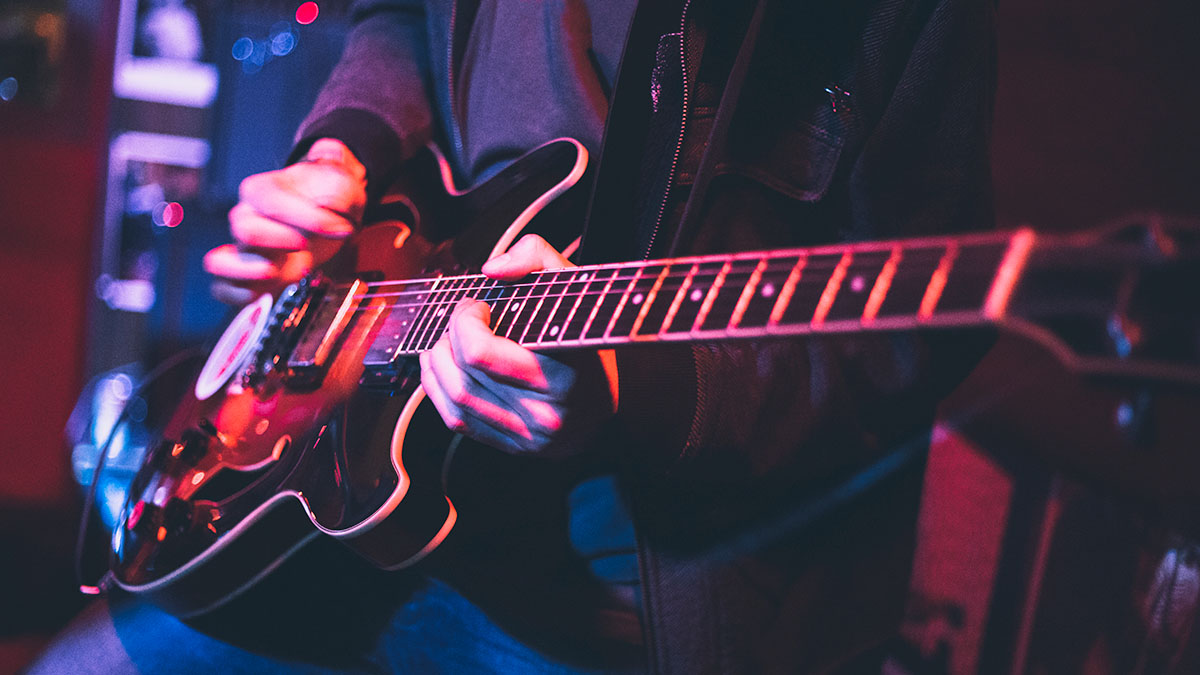Stageworthy Strategies, Part 1: Get Yourself Ready to Return to the Stage
Gigs are back! Here’s how to get geared up and ready to perform.

Positive news on the vaccine front has players pumped to play in public again. After a long hiatus, are we ready? Getting together with my group Spirit Hustler for the first time in many moons was interesting on several levels.
We had all purchased new gear that we were stoked to show each other, but none of us had mastered it or made the tough choices about what older items might be left behind in favor of the new. We were also understandably rusty.
Many of us have work to do before we’re stage-worthy again. Here are a few tips to help you get ready for live action.
Choose A Workhorse And Protect It
Designate a primary gig guitar. Save the pawnshop prize for the studio and get a reliable workhorse ready to saddle up and ride at a moment’s notice. A production model that can be readily repaired or replaced is on point. On a related note, I had inadvertently let my insurance lapse, so here’s a reminder to renew yours.
Musician’s insurance, such as the policy I have from MusicPro, covers you for theft, but cover your guitar literally as well. Acoustic guitars are more fragile than electric guitars. A cushy gig bag with extra pockets for accessories is fine if you’re carrying it by hand or in your vehicle, but if your band throws its stuff into a van, use a hard case.
String Up Fresh
Old strings can sound warm and woody in the studio, but they break more easily onstage, where we all play more aggressively. Fresh strings are more reliable and will deliver more “pop.” Re-string a day or three before the gig. One rehearsal in between is ideal.
Do not put brand-new strings on right before the gig or they will drive you crazy with tuning issues as they stretch out and settle in. And while I prefer the grip and springy feel of uncoated strings, I’ll use coated if I expect I won’t be changing them for a while.
All the latest guitar news, interviews, lessons, reviews, deals and more, direct to your inbox!
The number of guitars and tunings in play for a given number of gigs is also a factor. I can wear out a set of strings in one or two nights by making lots of tuning transitions on a sole guitar. Playing mostly in standard tuning and designating a second acoustic for open tunings will make strings last a lot longer.

Set Up Smart
While thicker strings generally sound better, lighter strings require less torque and can make playing live feel easier and sound fine with the aide of amplification. Conversely, light strings are more easily overwhelmed when adrenaline kicks in, which can lead to brittle tone and broken strings. As a general rule, put .012-gauge strings on anything below a dreadnought size, and .012s or thicker on anything from a dread on up to a jumbo.
Audition the strings for your live workhorse through amplification. That will help your gig chops, and with all the modern preamps, effects pedals, and amps available, there’s no need to struggle with your sound. Keep your attack in proportion to your style, and let the electronics lend a helping hand.
We’ll delve into acoustic-electric signal chains next issue. In the meantime, start getting yourself and your instrument ready to roll. This pandemic isn’t going to last forever, and when the veil finally lifts, there’s going to be a live-performance renaissance like we’ve never witnessed.
Further reading...
Jimmy Leslie is the former editor of Gig magazine and has more than 20 years of experience writing stories and coordinating GP Presents events for Guitar Player including the past decade acting as Frets acoustic editor. He’s worked with myriad guitar greats spanning generations and styles including Carlos Santana, Jack White, Samantha Fish, Leo Kottke, Tommy Emmanuel, Kaki King and Julian Lage. Jimmy has a side hustle serving as soundtrack sensei at the cruising lifestyle publication Latitudes and Attitudes. See Leslie’s many Guitar Player- and Frets-related videos on his YouTube channel, dig his Allman Brothers tribute at allmondbrothers.com, and check out his acoustic/electric modern classic rock artistry at at spirithustler.com. Visit the hub of his many adventures at jimmyleslie.com
